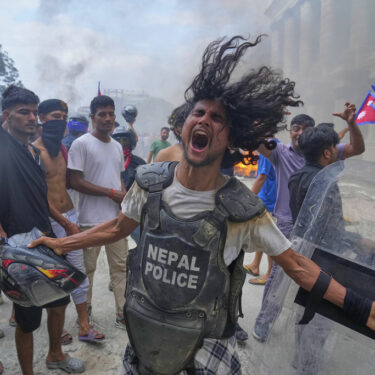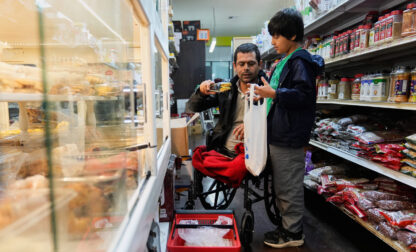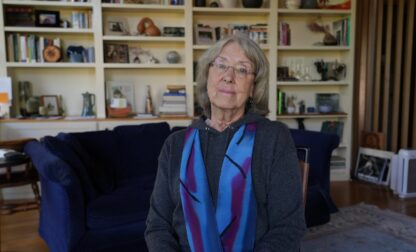It began as a street protest led by Nepal’s Gen Zers, triggered by an abrupt ban on social media platforms and anger over widespread corruption. Kathmandu reporter Binaj Gurubacharya, photojournalist Niranjan Shrestha and videojournalist Upendra Mansingh were in place as the crowd swelled, and the situation quickly descended into violence and chaos. Dozens of protesters were killed as the security forces opened fire.
What followed was a frenzy of arson as protesters targeted government buildings and political offices. The Kathmandu team captured the action in all formats, showing shirtless men waving the national flag atop the gates of Singha Durbar, the administrative palace that houses government offices, with protesters surging into Nepal’s Parliament and torching the Supreme Court.
Even after the ban was revoked and the prime minister resigned, protests continued until the army stepped in and negotiations began over an interim government. As Gurubacharya filed quick alerts and updates, reporter Sheikh Saaliq and VJs Rishi Lekhi and Shonal Ganguly in Delhi helped with reporting, video editing and coordinating lives. The Business News and Tech teams provided critical context on internet freedom, and Colombo and Dhaka added reporting on public anger dislodging governments in South Asia in recent years.
Working closely with chief photographer Manish Swarup and Deputy Asia News Director Yan Arthur, Shrestha delivered powerful images that appeared on the front pages of major news sites. Gurubacharya and Shrestha also provided reporter debriefs with live action unfolding behind them, marking AP’s presence on the ground for a story making global headlines.




